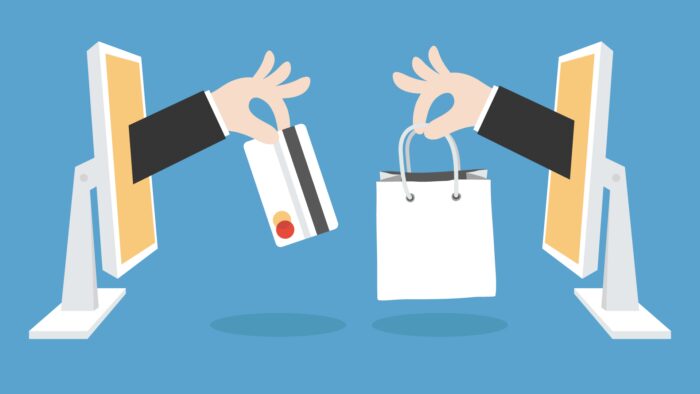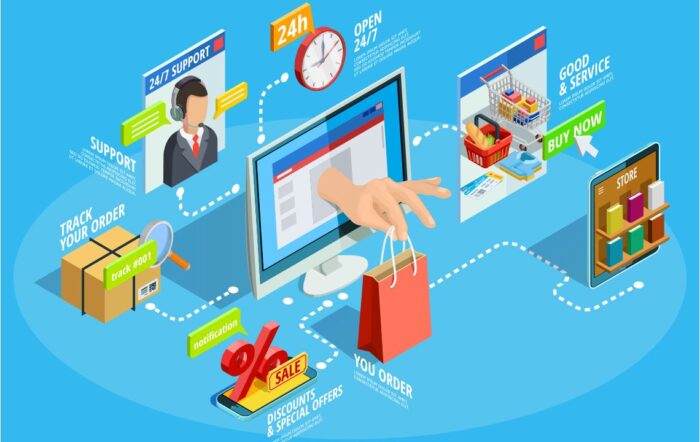
The internet has made it possible for anyone to start an online store and reach a global audience. WooCommerce is a popular eCommerce platform that helps you set up and run your online store. This guide will walk you through the steps of setting up an online store.
Steps To Set Up WooCommerce Online Store

● Choosing a hosting provider and domain name
When you are ready to set up your WooCommerce online store, there are a few things you will need to do in order to get started. One of the first things you will need to do is choose a hosting provider and domain name for your store.
There are many different hosting providers and domain names to choose from, so it is important to take some time to research your options and choose the one that is right for you. Once you have chosen a hosting provider and domain name, you will need to set up your server and install WooCommerce.
● Install WordPress & WooCommerce Plugin
WordPress is a popular content management system (CMS) that helps you easily create a website or blog. WooCommerce is a popular WordPress plugin that turns your website into an online store. First, you’ll need to make sure that your server meets the minimum requirements for WordPress. Next, you’ll need to download the latest version of WordPress and plugins WooCommerce. Once you have these files, you’ll need to upload them to your server and unzip them. Finally, you’ll need to create a database for your WordPress installation. Also, if you want to add extra functionalities like
● Choose a website theme.
Selecting the right WordPress theme is critical for your online store. Your theme controls your site’s overall look, feel, and branding. It also affects the user experience, which can make or break your eCommerce business. WooCommerce plugins make choosing and customizing a theme that matches your brand easy. Storefront is the default WooCommerce theme. It is available in the WordPress Theme Directory for free.
Once WooCommerce is set up in your WordPress dashboard, and you have chosen a template, you can begin building the pages that make up your website.
1. Landing Pages
Your online store will have landing pages as a key component. These pages are what visitors “land” on if they search for your website via an organic Google search or by searching online.
It would be best if you used the following landing pages:
- Highlight your best products
- Optimize for keywords relevant
- Encourage your customers to visit your store.
2. Product Listings and Pages

The most important aspect of an eCommerce website is its product pages. These pages can be used to list and display your products.
WooCommerce offers easy-to-use product page templates that allow you to customize features such:
- Price
- Photo of the product
- Product Description
Once you are happy with the product page template, all products can be added to the Products dashboard. This dashboard lets you:
- Filter by product type and customized tags
- Input products and shipping details
- You can link certain products and add frequently bought together WooCommerce plugins to cross-sell and upsell their product pages easily.
This dashboard makes it easy to manage your products. You can add a product to your list quickly, and it will appear immediately on your website. You don’t need to modify a product to make modifications to it. You have to edit the settings from the dashboard.
3. Shopping Cart and Checkout
WooCommerce will allow you to create high-quality shopping carts, checkout pages and other products. You can quickly access details regarding purchases, returns, and update factors like shipping costs in the payments extension dashboard.
● Setting Up Payment Methods
Setting up payment methods is important when setting up your online store. There are a variety of WooCommerce payment gateways available, and you’ll need to choose the one that’s right for your business. You’ll also need to set up your payment gateway and secure your shopping cart.
It supports multiple payment options. The most used payment options are PayPal and Stripe. It is highly recommended to integrate your site with both. In your settings panel, you will have more options and can choose as per your needs. To make the user experience smoother, install the WooCommerce shipping plugin and WooCommerce short codes plugins with the payment gateways.
● Adding Products To Your Store
Adding products to your store is simple and straightforward. First, you’ll need to log in to your WordPress administrator dashboard. Once you’re logged in, you’ll see the menu on the left-hand side of the screen. Hover over this menu and click on “Products.” On the Products page, you’ll see a button that says “Add New.” Click on this button to begin adding a new product to your store.
Next, you’ll need to enter a product name, description, and price. You can also set product categories, tags, and featured images from this screen. Once done, click the Publish button to save your changes and make the product live in your store.
Tips To Grow Your Online Store With WooCommerce

If you are looking for a complete eCommerce solution for your business, you may consider using Booster for WooCommerce. Booster is a plugin that extends the functionality of WooCommerce and provides all the features that are missing in the regular WooCommerce plugin.
Booster offers modules for abandoned cart recovery; product upsells, customer reviews, social proof, order management, customer management, and checkout customization. And because Booster is built on the WooCommerce platform, it integrates seamlessly with your existing store. So, if you’re looking for a way to take your store to the next level, Booster is the perfect solution.
However, just because WooCommerce is easy to use doesn’t mean you can launch your store without planning. You’ll need to develop a solid startup strategy before launching your store. Otherwise, you’ll likely struggle to get off the ground.
- Use SEO keyword research and social media marketing to reach your target audience. This will help you increase your organic traffic.
- You can use opt-ins for leads to your email list.
- Use automated email marketing to reach potential customers at critical points along the buyer’s journey.
- Follow-up with customers to build brand loyalty
- Use online ads (search ads and social media) to get paid traffic to your site. This is a great option if your website is starting and you want to get your product out quickly.
Conclusion
In conclusion, setting up an online store is a simple process that can be completed in just a few steps. First, you need to create an account and install WooCommerce. Next, you need to choose a theme and add your products. Finally, you need to set up your payment gateway and shipping options. Following these steps, you can have your WooCommerce online store up and running in no time.
















